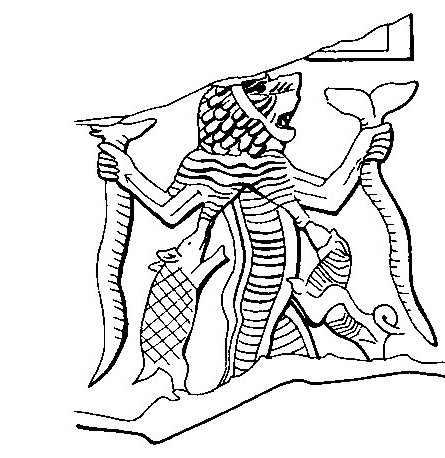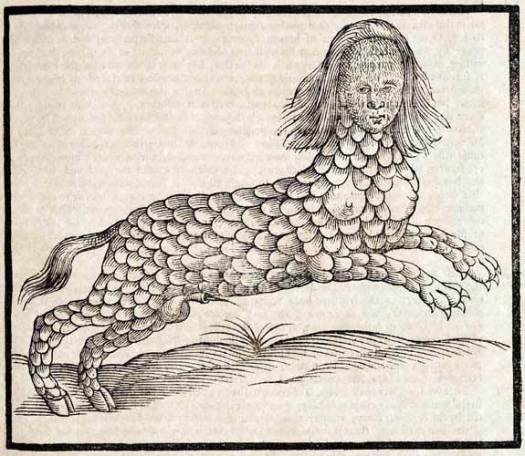
Chances are when you think of vampires you’ll think of Dracula, Blade, Angel, or any of the fanged creatures-of-the-night that populate modern culture, including Mara from Love Lies Bleeding. The vampires we’re familiar with are (generally) human looking, powerful, often charismatic and attractive, with a thirst for blood and a dislike of stakes. But that wasn’t always the case. History and folklore are full of vampires that are nothing like what we’ve come to expect. Here are five examples…
Lamaštu (or Lamashtu)

Depicted as having a lion’s head, donkey’s teeth, bare breasts, a hairy body, bloodstained hands with long fingers and nails, and taloned bird’s feet, Lamaštu was an evil Goddess of ancient Mesopotamia who preyed on newborns and fetuses in order to suck their blood (among other things). Miscarriages and sudden deaths of infants were blamed on her. Pregnant women could ward her off with amulets, an incantation, or offerings of centipedes and brooches. The offerings were meant to distract Lamaštu, which was a common way of thwarting vampires.
Riri Yaka

In the Sinhalese culture of Sri Lanka, the Riri Yaka, or “Blood Demon” has an eternal thirst for blood. He’s usually portrayed as being a blood-smeared, ape-faced, four-armed man with a mouthful of decomposing human flesh. He haunts graveyards, crematoriums, and the dying. He can also possess people and cause illness, usually of the blood. People possessed by Riri Yaka are pale, listless, and anemic; a ritual ceremony must be performed to cure them.
Penanggalan

Seemingly a normal woman during daylight hours, once the sun goes down the Penanggalan detaches her fanged head and organs from her body in order to fly around the Malaysian countryside in search of the blood of newborns and women who have just given birth. Those who survive being fed on inevitably contract a wasting illness, another common theme in vampire myths. Penanggalan will often disguise themselves as midwives, but can be recognized by their characteristic vinegar smell (they keep a vat of vinegar in their home in which to soak their entrails) and odd behaviour. The best way to get rid of a Penanggalan is to surround doors and windows with thorny branches and thistles, so that they will become entangled and trapped. If found, their hollow bodies can also be stuffed with broken glass or destroyed, which will kill off the head.
Lamia

Daughter (or possibly granddaughter) of the Greek God Poseidon, Lamia was Queen of Libya and Zeus’s lover before being transformed by his wife, Hera, into a creature that was part woman, part sea monster, and wholly deadly. Described as either stunningly beautiful or hideously ugly, Lamia generally had a woman’s face and serpent-like features. In retaliation for Hera killing her children, Lamia began murdering other people’s children by sucking their blood. Over time she was also said to seduce and devour men. Lamia had the power of prophecy, as well as shape-shifting abilities and magical powers. Eventually the single woman became pluralized into a race of vampiric monsters, the Lamiae. The origins of Lamia may lie in Mesopotamia’s Lamaštu. A modern Greek folk saying explains the sudden death of infants and young children as “[the child was] strangled by Lamia.”
Peuchen

The Mapuche and Chilote of southern Chile have a legend of a shapeshifter that petrifies victims (both human and animal) with its stare in order to then drain their blood. The peuchen can take any form, although it prefers that of a giant, bat-winged flying snake. Only a machi (medicine woman) can defeat it. There may be a connection between the myth of the peuchen and that of the chupacabra.
Have you heard of these vampires? Which do you think is scariest? Tell me in the comments.
If you want more vampires right now, download my books:
Love Lies Bleeding: Smashwords, Barnes & Noble, Kobo, Apple Books
FREE Blood Magic: Smashwords, Barnes & Noble, Kobo, Apple Books
FREE Tooth & Claw: Smashwords, Barnes & Noble, Kobo, Apple Books
If you prefer paperback, use this link to order Love Lies Bleeding from Bookshop – a portion of each sale goes directly to independent bookstores, as well as to myself. Thank you for supporting indie! ♥
Cheers.
Aspasía S. Bissas
Further Reading
Seven Mythical Creatures that Supposedly Haunt Sri Lanka
Encyclopedia of Beasts and Monsters in Myth, Legend and Folklore


No comments:
Post a Comment